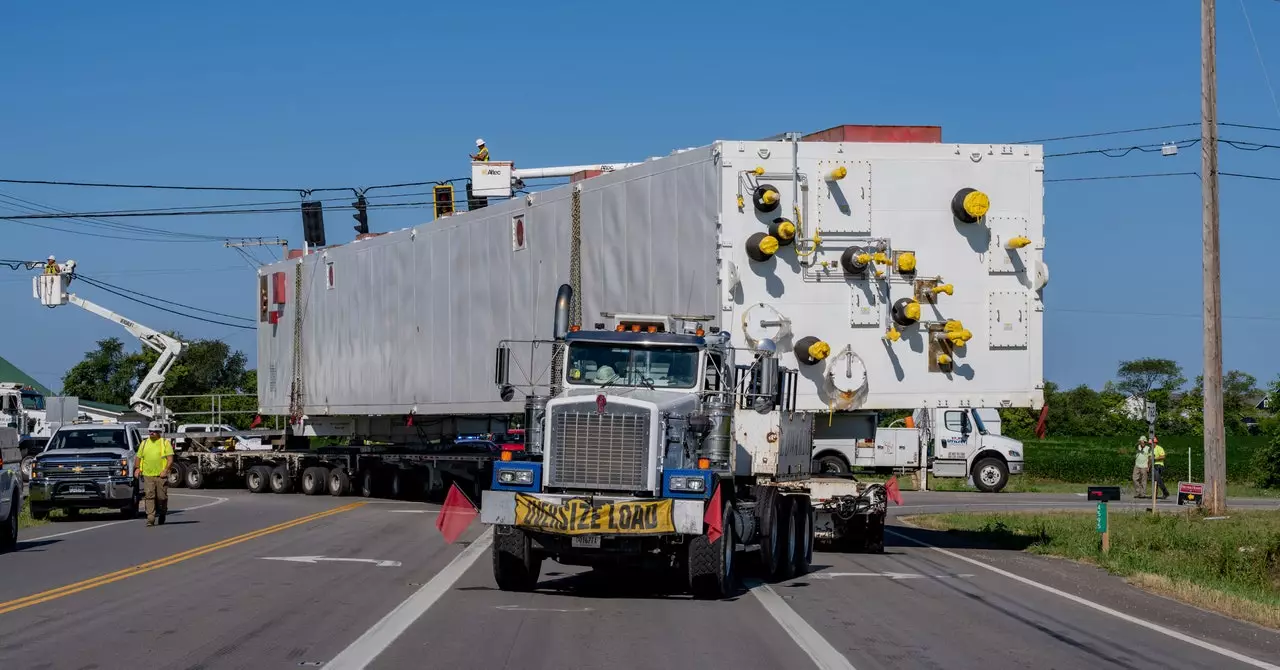Moving massive machinery from one point to another is rarely a straightforward task; however, the logistics surrounding the transport of superloads—cargo exceeding 120,000 pounds—require an additional level of attention and complexity. Recently, in Ohio, this process reached a new zenith with the delivery of a remarkable cargo: a 280-foot-long, 23-foot-tall, 20-foot-wide piece of equipment known as a cold box. Weighing nearly 1 million pounds, it signifies a crucial step towards Intel’s ambition of becoming a leader in the production of AI chips. The journey of these extraordinary loads highlights not only the intricate planning involved but also the community’s engagement and history intertwined with industrial development.
Transporting a behemoth like the cold box doesn’t just happen overnight. It takes meticulous planning that can span nearly two years. The cold box is not just a random piece of equipment; it is a vital component of the air separation unit used in semiconductor manufacturing, essential for the cleanroom environments required to produce microchips. Creating a cleanroom is no easy feat—any speck of dust can destroy a silicon wafer. To facilitate this, air must be separated into its elemental gases, which will then be utilized for various manufacturing processes.
Two dozen superloads have been designated to traverse Ohio, each one carefully marked with extensive permits and arrangements involving multiple stakeholders, from local law enforcement to utility companies. For the successful movement of such gigantic objects, a coalition of specialists must work together for an extended duration, maneuvering traffic lights and power lines as necessary to clear the path. Notably, this logistical ballet must be executed before the school year begins, minimizing disruption for local families.
As these superloads embark on their journeys, they become a source of curiosity and excitement for local communities. Residents follow updates on social media pages, each comment forming a dynamic conversation ranging from frustration about resulting traffic to fascination with the engineering marvels on display. Supportive comments from the public reflect a blend of admiration and pride as townsfolk witness the phenomenal efforts involved in moving such significant industrial components.
One of those engaged observers is Emily Stone, a local who has taken it upon herself to document these massive transports, earning the nickname “Load Chaser.” Stone finds joy in witnessing these symbols of industrial progress, particularly against the backdrop of Portsmouth’s historical context. The town has seen better days, once bustling with factories and industrial vigor, but there’s a nostalgia tied to its past that deeply resonates with her.
Portsmouth’s history is a narrative of transformation, manufacturing successes, and challenges. From the days it housed shoe factories and steel mills to more controversial plants involved in uranium enrichment, the town has faced various industrial tides. Stone’s connection to the uranium enrichment facility—where her father worked for 35 years—speaks to the community’s struggles and resilience.
While transformations and advancements, like those brought by Intel, offer hope and new opportunities, they also evoke memories of past challenges, such as the closure of schools due to environmental concerns. The transporter of the cold boxes symbolizes the intersection of hope and trepidation—a significant step in revitalizing the local economy while acknowledging the shadows of the past.
The enormous scale of transporting cargo like the cold box for Intel elucidates not just the logistical magnitudes involved but the collective hope and engagement of communities intertwined with such developments. For residents like Emily Stone, the superloads represent more than mere machinery; they symbolize a new chapter in their town’s narrative. As the heart of technology begins to sprout in Ohio, balancing progress with community sentiments will be paramount, ensuring that the future remembers not only what is built but also those who built it.


Leave a Reply
You must be logged in to post a comment.